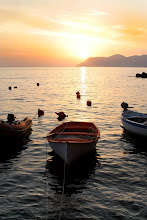
It’s not easy picking the time of year to travel and there is no right answer. We’ve taken trips in March, May, December and September. This decision completely depends on your climate preferences, what countries you plan to visit and what time of year you have free.
Weather is obviously a major determining factor in worldwide travel. We trust The Weather Channel or www.weather.com. You can find the forecast for anywhere, from anywhere. Weather.com also has great information for trip planning including temperature and precipitation charts to see yearly averages. Towns included in the yearly averages are:
Amsterdam, Athens, Berlin, Brussels, Dublin, Frankfurt, London, Madrid, Munich, Rome, Vienna and Zurich.
You can also use Weather.com while you are traveling. Many hostels have free internet or you will be stopping at cafes from time to time, so check the weather a day or two out to plan when it’s best to spend the day on a train, in a museum or hiking.
Our favorite travel times of the year for Europe is any time between late March through May or September into early October. These times of year are not considered peak season, so some hostels and attractions have cheaper fares and more availability of rooms (especially for large groups). The seasons are also changing during this time of year, so days aren’t too hot and nights aren't too cold... depending on where you’re going, of course. For instance, Edinburgh currently has highs of only 50 degrees and rain is predicted over the next week while Sardinia has 70-degree days and 50-degree nights. During the springtime, it might be best to move north as you travel; during autumn, go in the opposite direction.
While in Europe, degrees will be in Celsius – C, and we never paid attention in high school to do the mathematical conversion properly to find the Fahrenheit equivalent so we’ll let you in on a little secret Scott's grandfather taught him: when converting C into F, take the C number, double it and add 30.
We’ll slow it down. If the newspaper in Zurich says the daily high is 20C, double it (40) and add 30, and you will get 70F. 20 x 2 + 30 = 70. Now this is not the exact number, which is more like 68, but close enough to know weather a t-shirt or sweater is appropriate.
This conversion works the other way as well when trying to tell a European the average temperature in your hometown. This time, work backward. Subtract 30 from the Fahrenheit number and then cut it in half. If the temperature you’re trying to convert is 90F, 90-30 = 60, then 60/2 equals 30C.
Easy, right? We’re sure everyone has that app in his or her cell phone already, but now you’re way ahead when the battery dies! Or when you have your phone turned off and hidden inside your backpack, which is the best way to experience Europe - no matter what the weather!
















No comments:
Post a Comment